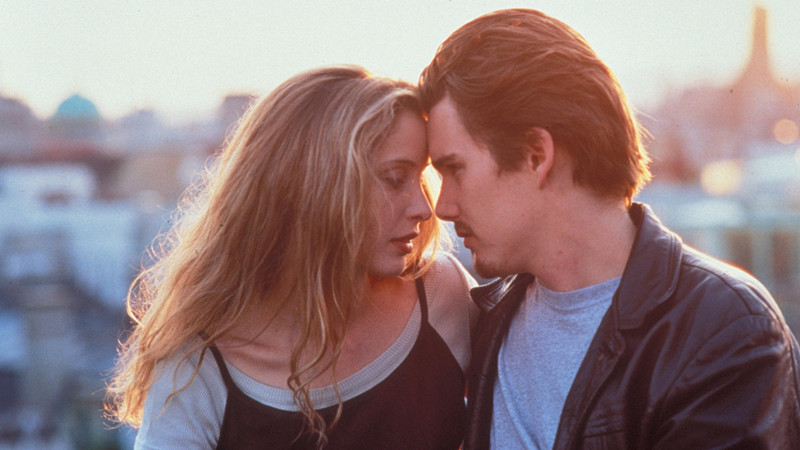
Conversation is one of the many gifts given to us simply by virtue of being human. From the repartee at a reunion of old friends or pillow-talk between lovers, to intimate tête–à–tête full of scandalous secrets or an all-out political talkfest, conversations are reminders of the wonder that is human interaction.
In this world where each one of us is a unique individual, it’s not possible to hold conversations with everyone. However, when we care enough to make that effort, it occasionally creates some wonderful bonds and memories, doesn’t it? As Celine, in Before Sunrise, says, “If there’s any kind of magic in this world it must be in the attempt of understanding someone sharing something”.
My favourite conversations are those that seem to come out of nowhere. Someone would utter a random statement, another would pick it up with a remark, and so forms a thread of responses that would rarely have any binding on the people involved. I’m talking of those ramblings that demand no personal information or seek to fulfil an agenda. And I’m definitely not talking about gossip, or the meaningless small talk that aims to fill awkward silences.
In fact, the conversations I speak of would most likely be considered irrelevant to most. For instance, I’m pretty sure that the topic of tomatoes as the most versatile vegetable, or of the significance of dragons in a fictional world, would seem to be complete nonsense to a lot of people. They probably are. Yet because of their seemingly strange content, the human connection that is created by such conversations is made all the more special; and that connection emits such spontaneous merriment that listening to them could make an outsider wish they were a part of them.
Casual conversations like these are not common in movies. Whatever is spoken is usually crucial to the movie plot (or is thought to be). Still, there are a few films that celebrate this magic of conversation.
Listed below are some of those that I enjoyed immensely. The list is diverse, and cuts across different genres. However, what they have in common is wit and lightness, making them suitable for repeated viewing, and dialogue so eloquent that it’s enough to keep an attentive audience enthralled.
10. In Bruges (2008)
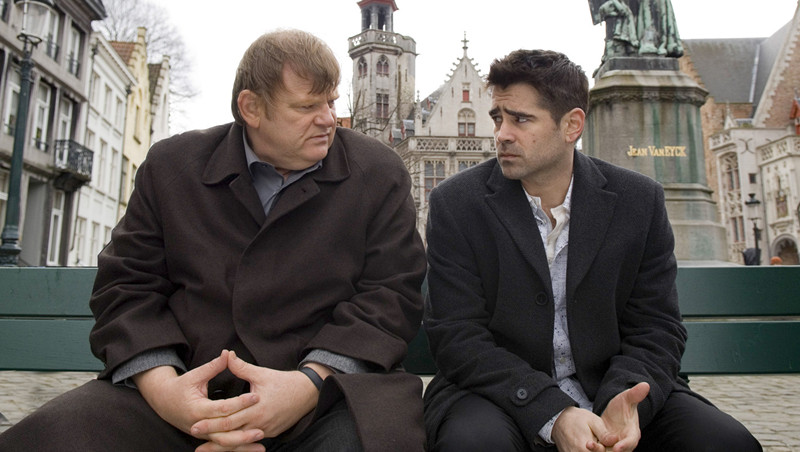
This noir dark comedy is the film debut by theatre writer-director Martin McDonagh. Ray (Colin Farell) and Ken (Brendan Gleeson) are Irish hitmen who have been ordered to go into hiding in the “fairytale town” in Belgium – Bruges – by their ruthless boss, Harry (Ralph Fiennes), after a job gone horribly wrong.
The film wastes no time in telling us that Ray has just murdered two people. What went wrong, why they are in Bruges, what transpires there and the motivations of each of the characters, is what the film reveals through a story full of twists and turns.
Farell portrays Ray as one of the most endearing assholes I’ve seen on screen. He hates being in Bruges, especially since he has to share his room with the older Ken, and is bored out of his mind. He spends much time sulking like a child as he is forced to go sight-seeing by the happy tourist, Ken.
The clashes the two have in their attempt to find a “balance between culture and fun” make some very amusing interactions. Through their banter, though, we also witness the camaraderie between them; and their conversations, touching upon topics such as death, the afterlife and ‘trying to do the good thing’, set the philosophical undertone of the film.
We only hear Ralph Fiennes’ Harry for the first two-thirds of the film, but he makes up for it by his superlative voice-over. The hilarious way in which he punctuates every sentence with the f-word could give Samuel L. Jackson a run for his money.
The film also includes some interesting secondary characters: a local drug dealer-cum-part-time film production assistant who Ray develops a romantic interest in, a drug-addled dwarf actor who believes there is an impending war between the blacks and the whites, and an arms dealer who concerns himself with the appropriateness of the term ‘nooks-and-crannies’ over ‘alcoves’.
Undoubtedly one of my favourite films, In Bruges is a must-watch for the brilliant performances, a virtual tour of the picturesque Bruges, and the thoroughly entertaining, yet thought-provoking, screenplay.
Note: Watch out for symbolism throughout the movie. In Bruges is part of the centuries-long conversation on repentance and redemption.
9. Sex, Lies, and Videotape (1989)
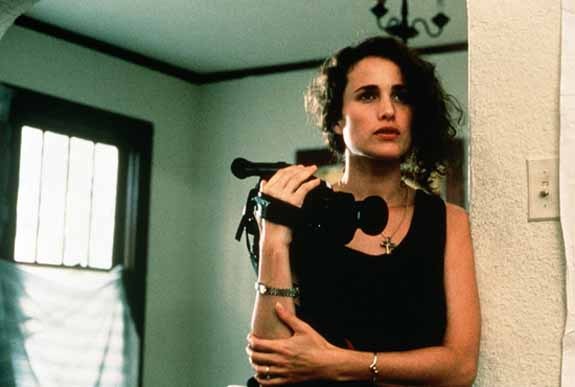
Steven Soderbergh’s directorial debut in a feature film, Sex, Lies and Videotape is often credited as having brought independent cinema to prominence. It’s a drama which, with a focus on sexuality, tells the story of four individuals.
Ann (Andie MacDowell) is a housewife who believes sex to be overrated. Right in the beginning of the movie, through her session with her therapist, we know that she is no longer physically intimate with her husband.
She, however, doesn’t consider it a big deal and concerns herself more with issues such as the accumulating pile of garbage in the world and kids dying of starvation in Ethiopia. Her lawyer husband John (Peter Gallagher), on the other hand, is having a passionate affair with Ann’s sister, Cynthia (Laura San Giacomo).
While this arrangement is destined to meet its predictable doom eventually, its fate is hastened by the arrival of John’s drifter friend, Graham (James Spader), who videotapes women as they willingly talk about their sexual experiences. With this intriguing set-up, the plot moves to unveil how Graham and his fetish affect the lives of the three other characters.
Contrary to what the title of the film may indicate, Sex, Lies and Videotape doesn’t have a single sex scene. There is no nudity, either. Yet, with just the use of speech and a couple of scenes that only imply sexual intercourse, Soderbergh presents a film that oozes with eroticism.
While most of the conversations in the film revolve around sex, the end game here isn’t sex as much as intimacy – a universally coveted goal that, as the film reveals, is more likely attained with conversation than sex.
Conversations are rarely about the mere words that are spoken; they involve the sharing of minds. By using the subject of sex, which is usually considered private, this sharing is made even more significant in the film.
Analogous to shedding off clothes to reveal the bare body, these conversations entail baring the deepest parts of the characters’ minds – suppressed memories, insecurities, guilt and anxieties – a process that then becomes far more powerful than sexual union.
Through these intelligently scripted conversations, Sex, Lies and Videotape not only reveals the complexities of human sexuality and neuroses, but also makes us question normality.
There is a telling scene where Ann says to Graham, “And what would you know about a normal frame of mind?” To me, this question seems directed to the audience. How much do we really know about others to know what normal is?
Watch this film for its fascinating script and the brilliant performances, especially by James Spader and Andie MacDowell. Or watch it simply as an exercise to open your mind.
8. When Harry Met Sally (1989)
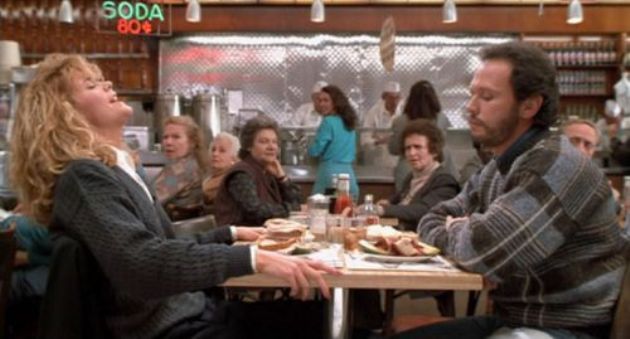
Harry (Billy Crystal) and Sally (Meg Ryan) meet for the first time in 1977, after they graduate from the University of Chicago and share a ride to New York City to start their careers.
Among other things, they argue about the possibility of men and women being friends. Harry believes that “men and women can’t be friends because the sex part always gets in the way”, but Sally disagrees. The movie basically plays out to test this theory.
Several chance meetings later, Harry and Sally finally become friends ten years after their first meeting. Sally is in the ‘mourning period’ after her break-up with her last boyfriend; and Harry is recovering from his divorce after finding out that his wife was cheating on him.
As the two support each other through this period and spend much time together, they predictably become close friends. Of course, there is always that lingering question of whether the ‘sex part’ would ruin their friendship.
Reminiscent of Woody Allen’s Annie Hall, there is a lot of talking in Rob Reiner’s When Harry Met Sally. From arguments about the last scene of Casablanca to concerns about post-coital cuddling, the conversations usually highlight the differences between male and female expectations.
The relatable dialogue and easy humour make these conversations especially amusing. It’s no wonder that some of the terms used in the movie such as ‘the dark side’, ‘high maintenance and low maintenance’ women and ‘the transitional person’ have become widely popular.
When Harry Met Sally is probably the easiest watch on this list, with the most conventional plot. It is also the warmest, and radiates with such tenderness that you are left with a smile on your face.
Regarded as one of the greatest romantic comedies of all time, When Harry Met Sally is a perfect movie to watch after a long day. If these reasons don’t suffice, watch this film just to see Meg Ryan faking an orgasm in a crowded deli.
7. Gangs of Wasseypur (2012)
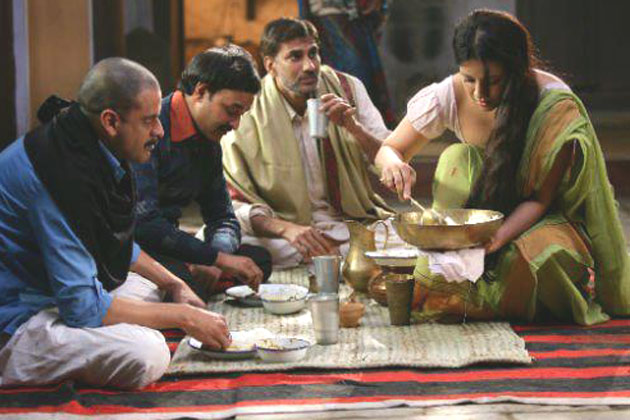
Gangs of Wasseypur is a two-part crime saga set in a region of eastern India. Centred on the coal mafia of the region, the film tells the story of gangster Sardar Khan (Manoj Bajpai), who seeks to avenge his dead father by destroying mafia don-turned-politician Ramadhir Singh (Tigmanshu Dhulia).
Fuelled by revenge, this feud lasts three generations and spans over seven decades starting from the early 1940s. Understandably, what forms is a complex web of plots and sub-plots, yielding innumerable characters.
Gangs of Wasseypur has been compared to many Western classics, especially The Godfather trilogy. It also seems to be influenced by the works of Quentin Tarantino. However, in Indian cinema, it is one of a kind. It has also managed to successfully capture the rustic flavours of India in a way few movies have.
Right in the opening scene, where we see a large group of people crowded in a single room, all glued to the television screen where a popular Hindi soap opera is playing, we know that this film is going to be as authentic as a feature film can be. The conversations in the movie maintain this authenticity. They are almost always crude, sometimes philosophical or dark, often hilariousl, and always very real.
There’s a scene where two men start talking about jackfruit and how they like it prepared; this, right when one of them is stalking an antagonist in a vegetable market. The conversation between Faizal Khan (Nawazuddin Siddiqui), one of Sardar Khan’s sons, and Mohsina (Huma Qureshi) as they go on their first formal date is a laugh riot.
There is another scene where a cannabis-induced Faizal Khan throws a rally of questions at someone trying to explain to him how a pager works.
Conversations in Gangs of Wasseypur, however, serve more than mere comedy. A few of them, albeit still funny, are part of the social commentary that runs parallel to the story.
For instance, exchanges between Sultan Khan and his wife Nagma Khatoon (Richa Chadda) touch upon subjects such as polygamy and sexual norms during pregnancy. ‘Bollywood’ movies are an integral part of Indian culture and we see its reference in several of the conversations, too. Ramadhir Singh, in fact, credits his longevity to his abstinence from the movies.
Drawing extensively from the region’s actual history, director Anurag Kashyap has spun together what is almost a sociological case study that examines the intermingling of politics, capitalism, organized crime and gang violence.
A film of this magnitude could seem unbearably weighty to many. However, the multi-dimensional characters, humour and music provide the necessary balance and make this movie a thoroughly entertaining watch that effectively depicts the futility of violence.
6. Coffee and Cigarettes (2004)
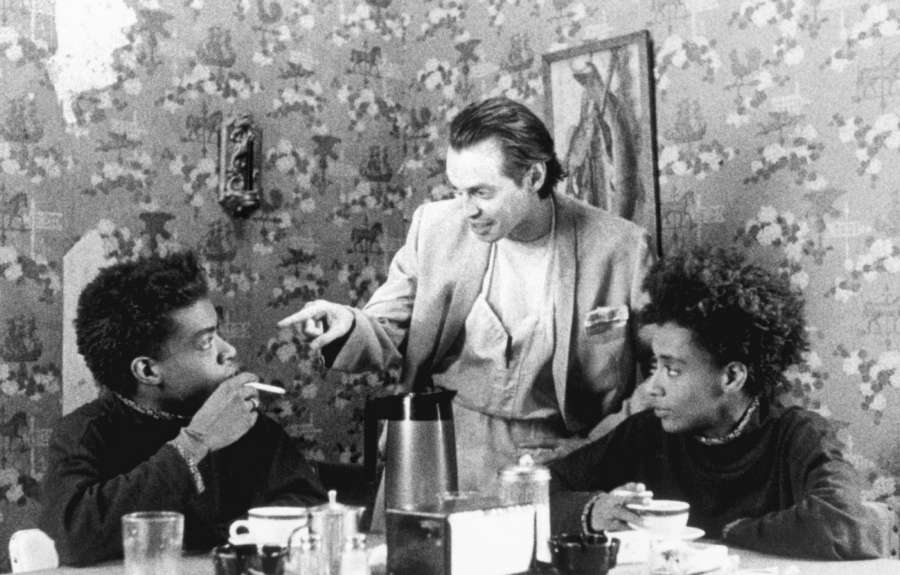
Directed by Jim Jarmusch, Coffee and Cigarettes is a collection of eleven short stories. Each story has a different set of characters, mostly played by celebrities who play themselves.
The film gives an impression that the actors are simply thrown together in a cafe, a diner, a hotel or a break room, and the only props given to them are coffee and cigarettes.
The film is far from being a product of mere improvisation, though. Shot beautifully in black-and-white, nearly all the vignettes are capable as stand-alone short films. The common themes and the enjoyable conversations, however, make the film well-worth watching in a single sitting.
The two common addictions – caffeine and nicotine – are a recurring theme, with the characters talking about subjects such as the idea of caffeine popsicles, the use of nicotine as an insecticide and bedtime coffee to see fast dreams. The idiosyncrasies of the individuals are also depicted by the way in which one takes their coffee or smokes their cigarette.
One of the best stories is the one titled Somewhere in California, featuring Iggy Pop and Tom Waits. While the two musicians are busy trying to one-up each other, they agree on one thing – that they both have to quit smoking; and using the typical rationalization of addicts who relapse following a clean period, they decide that since they are no longer addicted, they can now smoke a cigarette.
Somewhere in California won the best short at Cannes, however, my favourite story in this film is Cousins?, starring British actors Steve Coogan and Alfred Molina. Molina is evidently a great fan of Coogan’s and is thrilled at having discovered that they are distant cousins. Coogan, on the other hand, couldn’t care less about the meeting.
The push-and-pull of this dynamic, especially when it’s so brilliantly enacted by the two actors, makes for a very enjoyable viewing. Also, don’t miss Cate Blanchett’s double role in Cousins (yes, this is another story), Bill Murray in Delirium as a moonlighting waiter who drinks coffee straight from a jug, and Steve Buscemi’s theory on Elvis Presley’s evil twin in Twins.
Almost all the stories have contrasting characters who, in some way or the other, completely disagree with the other(s). The chequered tables holding their coffee and cigarettes seem to signify just that.
By using this theme, Jim Jarmusch shows us the unpleasant side of conversations – jarring individual differences, awkwardness, misunderstandings and the subtle power struggle that is occasionally involved. By tackling this aspect with goofy humour, great observation and the quirky characters, Jarmusch makes Coffee and Cigarettes a complete treat.